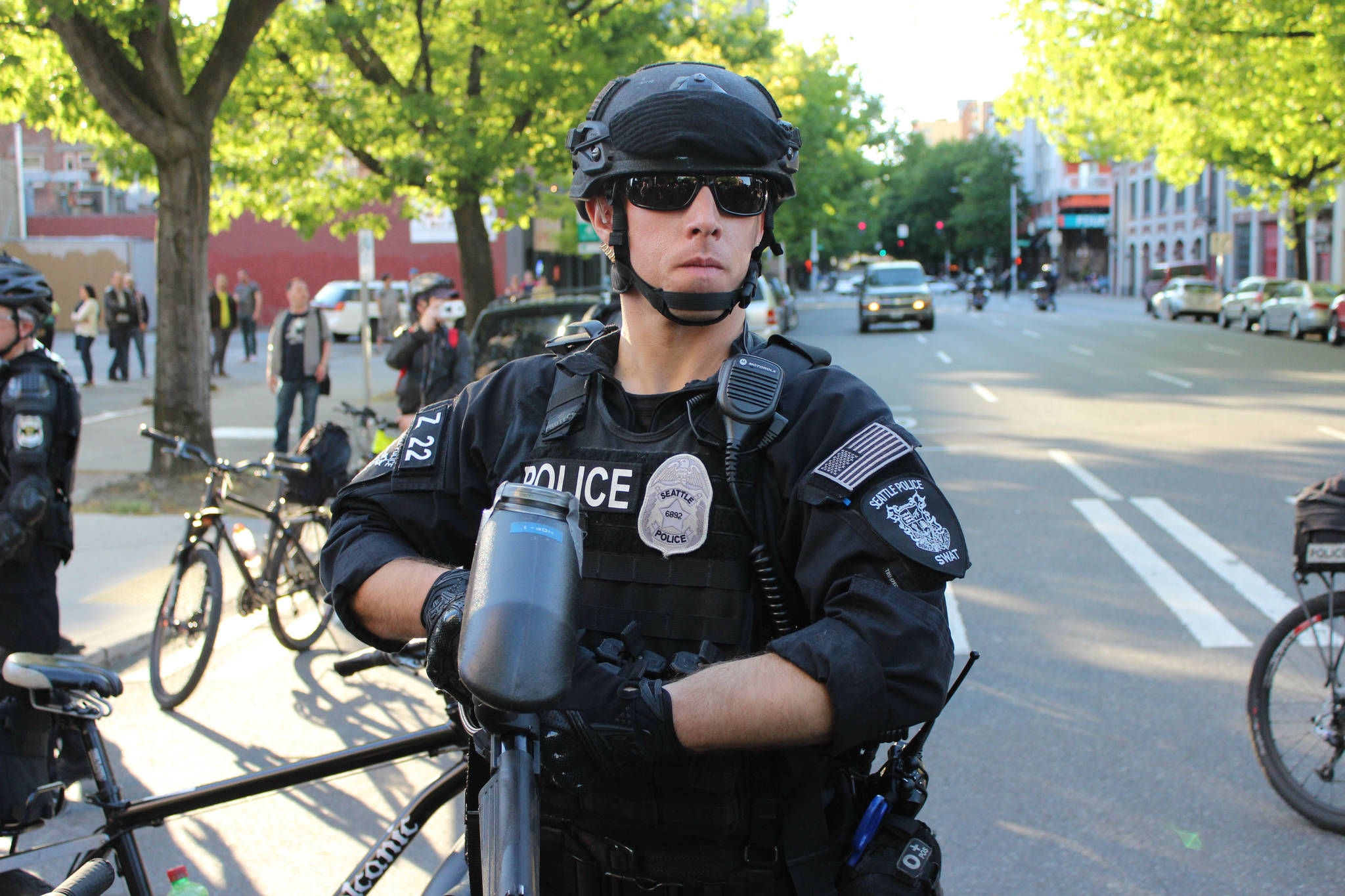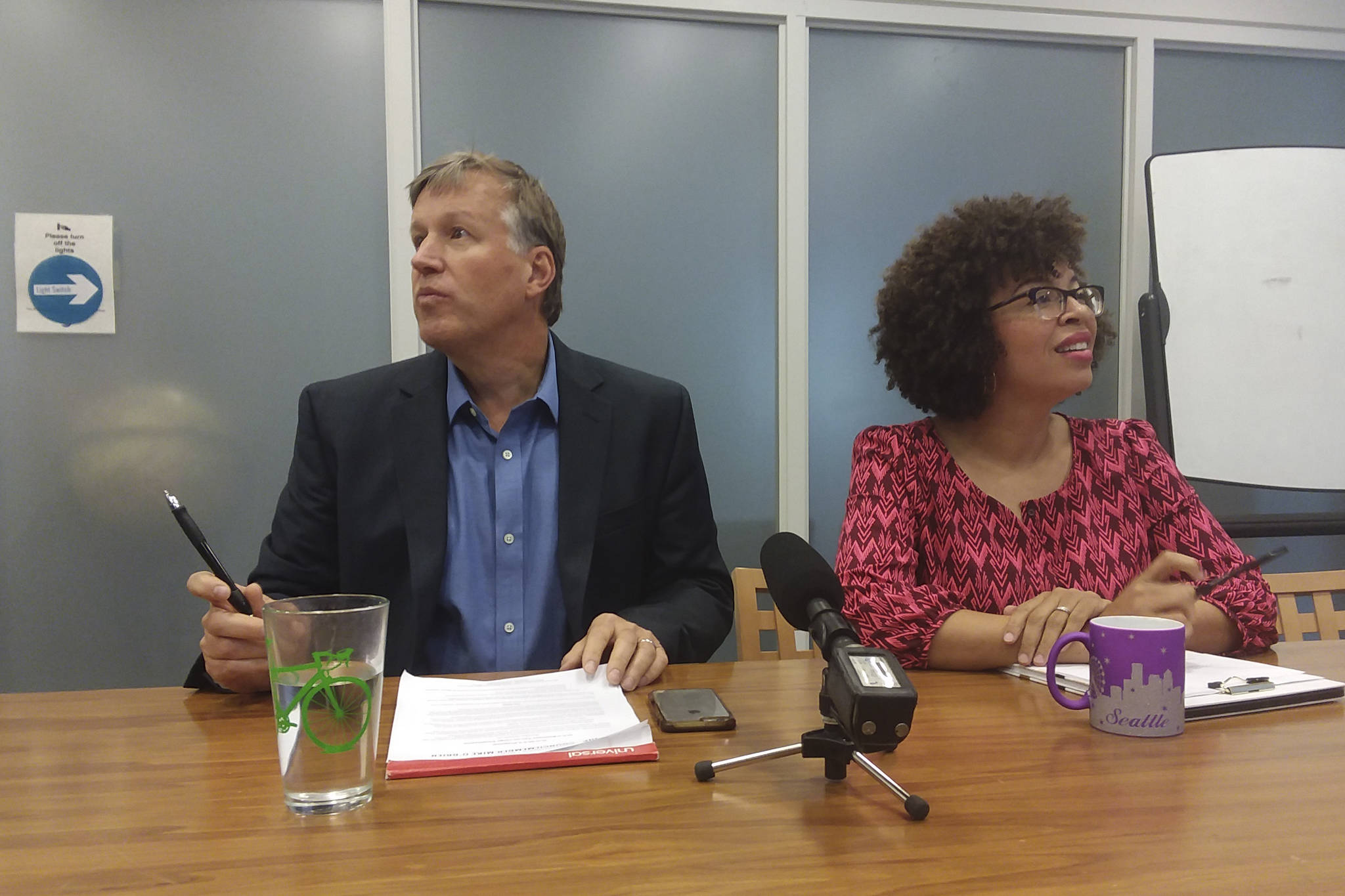For Brad Finegood, co-chair of a blue-ribbon task force on opioid addiction in King County, the question of reducing overdose deaths isn’t just professional.
Years ago, Finegood lost his brother to an overdose. Last week, he urged the political leaders who’d convened the task force to take radical steps to prevent more families from suffering as his did. “We need treatment that’s as available as the drug dealer is,” he told the executives of King County, Seattle, Renton, and Auburn.
How Finegood and others believe the leaders can do that is laid out in a new 99-page report that recommends pivoting toward a public-health, harm-reduction approach to drug use. Finegood argues that by following this blueprint, King County and its cities could theoretically reduce overdose fatalities by 80 percent.
When it was released last week, the report was quickly celebrated by harm-reduction advocates, in particular for its endorsement of safe drug sites—places where people can use illicit drugs in the presence of trained medical staff without fear of prosecution. But while the task force has plenty of data to back up its recommendations, it’s unclear whether politics are on its side—especially in more conservative suburban areas that are seeing the same scourge of addiction that Seattle is.
In an interview with Seattle Weekly, Mayors Denis Law of Renton and Nancy Backus of Auburn shied away from endorsing the idea of safe drug sites for their communities, clearly wary of how such an idea would be received at home. Meanwhile, a state lawmaker from Federal Way announced he would try to pass a law that banned such sites anywhere in the state, from Pasco to Pioneer Square. “These King County officials need to get out of their ivory tower in Seattle and talk to regular folks to understand the insanity of this proposal,” Sen. Mark Miloscia (R-30) told The Seattle Times last week.
In contrast, Seattle Mayor Ed Murray and King County executive Dow Constantine say they support establishing safe drug sites—known officially as Community Health Engagement Locations, or CHELs—though both caution that the details of how and where will be messy. “I believe we should have these sites,” says Murray. He emphasizes, though, that “treatment [is] the most important thing we can do … Nothing works, no site works, if we don’t have treatment.”
While CHELs are the report’s biggest lightning rod, they are just one item in a suite of recommendations. Broadly speaking, the report advocates shifting drug policy away from the police and toward public-health workers. Specifically, the task force calls on local governments to make changes in three areas:
• Prevention. Raise public awareness about the risks of opioid use; promote safe storage and disposal of medications; screen for opioid use disorder (aka addiction) in schools and clinics.
• Treatment. Make it easier to get buprenorphine, an opioid-based medication for weaning addicts off more dangerous opioids; provide drug treatment on demand, without any wait, for anyone with a substance-use disorder who wants it.
• Harm reduction. Expand distribution of naloxone, a medication that reverses opioid overdoses; establish CHELs.
Mayors Law and Backus, who with Constantine and Murray were the original requesters of the task-force report, have lots of nice things to say about the report overall. However, asked if he is open, even in principle, to a safe drug site in Renton, Law demurred. “We need to look at, what is the outcome?” he said. “What is the really perceived outcome? Are we going to be able to provide additional services besides just the site, that [are] going to make a difference in turning those lives around? Those are just so many questions that we just don’t have answers to right now. I’m not opposed to looking at anything, but I’m certainly not prepared to say, I’ve got a building ready, let’s put it to work.”
“We aren’t the experts,” agreed Backus, adding that the overarching goal of drug policy should be ending illicit drug use. “Ultimately, none of us want to think we have a safer person addicted to heroin or opiates,” she said. “We want to help them find a way out of addiction.”
While controversial, safe drug sites have been shown to reduce overdoses. Evaluations of Insite, an injection-only safe drug site that’s been open in Vancouver, B.C., since 2003, have found it phenomenally effective in reducing overdose deaths, public injecting, and dirty-needle sharing and in increasing participation in addiction treatment—all without any discernible negative side effects. It even seems to save taxpayers money by reducing “downstream” costs from emergency services and incarceration. As DePaul University researcher Greg Scott told Seattle Weekly earlier this year, “People will [use drugs] no matter what. They will do it between parked cars, in vacant buildings. In very, very dangerous situations, they will use those substances, and there’s no changing that.” Once you accept that fact, he said, safe drug sites become an obvious choice.
Nicole Macri, candidate for District 43 state representative, can vouch for the effectiveness of harm-reduction approaches to drug use. She says that at the Downtown Emergency Services Center, where she’s a deputy director, residents sometimes use drugs in their rooms (just like people who are not homeless, she notes), without facing eviction. “We do not evict people simply for using substances,” she says. “But we engage with people about their use and provide support for them in reducing harm and reducing use if that’s what makes sense for them.”
Would having a safe drug site located nearby help DESC’s mission? “It would be incredibly useful,” she says. “People need safe places to use drugs, because the fact is that people use drugs. Just because drug use is unsafe doesn’t mean that people stop.”
Macri says she’d go even further than the task force, noting that Canada just made it legal for doctors to prescribe medical-grade heroin to addicts for whom other addiction medications haven’t worked, since most of the health risks from heroin use come from dirty injections, unknown potency, and contaminants rather than from the heroin itself. “I would support that in Seattle,” she says.
Will Seattle embrace a drug policy that reduces harm instead of punishing users? The task force’s report and Murray’s and Constantine’s reactions seem to suggest the answer is yes. On the other hand, as reporter Erica Barnett noted recently, Seattle and King County commissioned a similar task-force report 15 years ago, to little effect. This report, too, could sink like a stone under the waters of public policy—or not, depending on how serious elected leaders and their constituents are about rolling back the War on Drugs.
The task force requested a formal response from their conveners by mid-December—though city budget season, when it will be possible to dedicate funding to the task force’s recommendations, ends in November.
cjaywork@seattleweekly.com








